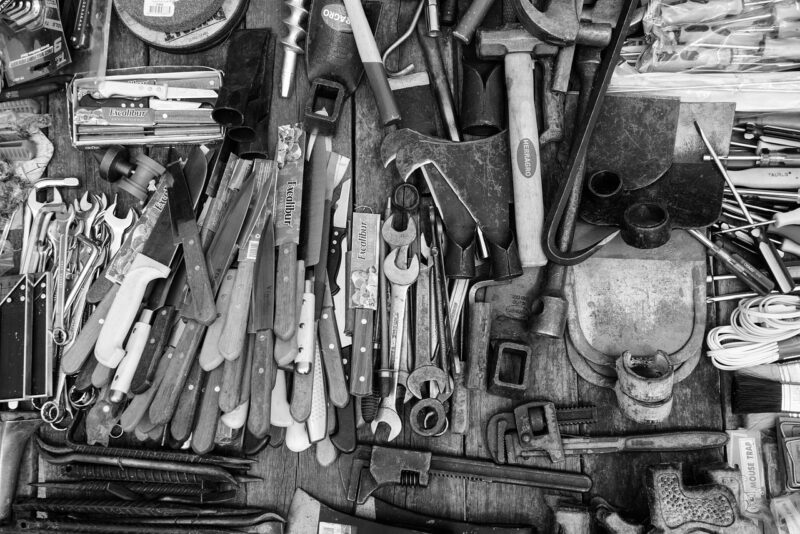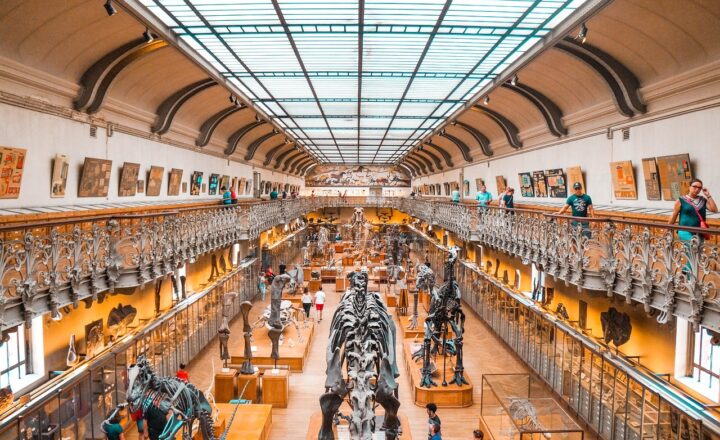Why the Evolution of Tools Is Considered One of the Greatest Milestones in Human Innovation
November 17, 2024

The evolution of tools stands as a monumental achievement in the narrative of human innovation. From the simplest stone implements used by our early ancestors to today’s advanced digital technologies, tools have been central to humanity’s survival, development, and progress. As we venture into this exploration, we will unravel the significance of tools in human history and their impact on our modern life.
1. The Definition of Tools and Their Functionality
Tools can be defined as instruments or devices created to extend the capabilities of our hands. They allow us to manipulate our environment more effectively, solving problems, increasing efficiency, and enabling complex tasks. Early tools were made from natural materials such as stone, wood, and bone, while modern tools can range from simple hand-held devices to complex, computer-aided machinery.
The functionality of tools can be categorized into several key areas:
- Survival: Early tools aided in hunting, gathering, and constructing shelters, ensuring the survival of early humans.
- Efficiency: Tools allow tasks to be completed more quickly and with less physical effort, from farming to construction to crafting.
- Innovation: As tools evolved, they stimulated further innovation, leading to complex societies and technological advances.
Understanding the role of tools is essential to recognizing their significance in human evolution.
2. A Brief History of Tool Evolution
The history of tools is intertwined with the evolution of human beings. Here is a brief timeline showcasing key milestones in the development of tools:
- Prehistoric Era: The earliest tools, such as stone hand axes and flint knives, were crafted around 2.6 million years ago. These tools marked the beginning of what we call the Stone Age, where humans relied on rudimentary technology for survival.
- Neolithic Revolution (circa 10,000 BCE): The advent of agriculture saw the development of new tools, such as plows, sickles, and grinding stones, which transformed the way humans interacted with their environment.
- The Bronze Age (circa 3300 BCE): The discovery of metallurgy led to stronger and more durable tools and weapons, facilitating exploration, warfare, and trade.
- The Industrial Revolution (18th-19th Century): This marked a significant transition in tool-making, with the introduction of machines and steam power, revolutionizing manufacturing processes across various industries.
- Digital Age (20th Century – Present): The rise of computers, automation, and information technology represents the latest phase in the evolution of tools, enhancing productivity and connectivity on a global scale.
Each stage in the evolution of tools reflects not only technological advancements but also profound changes in human society, culture, and economy.
3. Tools and Human Survival
The role of tools in ensuring human survival cannot be overstated. For early humans, tools were essential for:
- Hunting and Gathering: Primitive tools such as spears and nets provided the ability to hunt animals and gather edible plants, directly influencing food security and shelter-building.
- Defense and Warfare: Tools evolved into weapons, allowing early humans to defend against predators and rival groups, fundamentally altering social structures and community dynamics.
- Environmental Adaptation: Tools enabled humans to adapt to different environments, whether it was crafting snowshoes for navigation in icy terrains or building irrigation systems for farming in arid regions.
Through these innovations, humans could survive and thrive in varied habitats, laying the foundation for civilization as we know it.
4. The Social and Cultural Impact of Tool Evolution
As tools evolved, they also shaped human societies and cultures in remarkable ways:
- Social Structures: The use of tools contributed to the development of specialized skills and professions, creating a division of labor. Craftsmanship emerged, where individuals became experts in specific tool-making and usage, leading to stratified social hierarchies.
- Cultural Expressions: Tools were not only functional but also artistic. The crafting of decorative tools and ceremonial implements reflects the cultural and spiritual values of societies, providing insights into their worldviews and practices.
- Communication and Knowledge Transfer: The evolution of tools has been closely tied to the development of language and education, as skills and knowledge about tool-making were passed down generations, fostering cultural continuity.
Consequently, tools are seen as extensions of human capabilities that fostered the development of civilization as a whole.
5. Modern Tools and Future Innovations
Today, we find ourselves in an era dominated by modern tools that continue to foster innovation:
- Information Technology: Computers, smartphones, and the internet have drastically altered the way we communicate, learn, and work, reaching unprecedented levels of efficiency and connectivity.
- Automation and Robotics: Robotics and AI are transforming industries from manufacturing to healthcare, increasing productivity and enhancing the quality of life.
- Sustainable Technologies: Innovations aimed at sustainability, such as renewable energy tools and smart agricultural technologies, are essential for addressing global challenges like climate change and resource depletion.
As we look toward the future, the evolution of tools will surely continue to shape the trajectory of humanity, creating both opportunities and challenges.
Conclusion
In conclusion, the evolution of tools is a testament to human ingenuity and adaptability. This journey, from primitive stone implements to sophisticated digital technologies, illustrates our relentless pursuit of improvement in every aspect of life. Tools have not only served as instruments for survival but have also influenced our social structures, cultural expressions, and future innovations. As we continue to innovate, we stand on the shoulders of giants—our ancestors—who wielded the first tools that laid the groundwork for what we have accomplished today.
We must appreciate the profound impact tools have had on our past and recognize their potential in shaping a better future. The journey of tools is far from over; rather, it serves as a cornerstone of human advancement that will drive us toward new horizons in innovation and societal growth.







